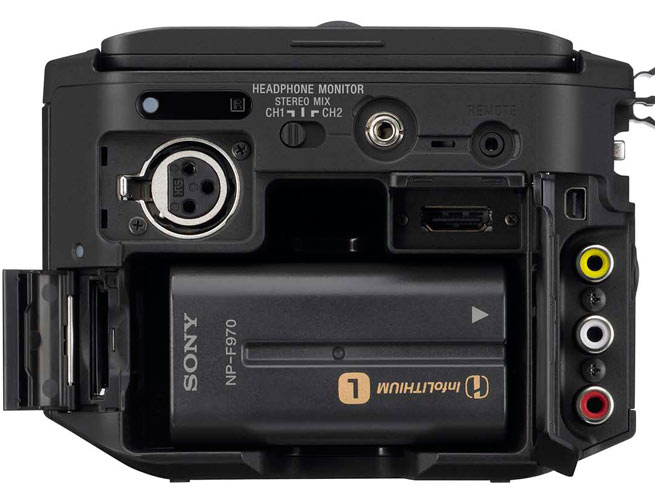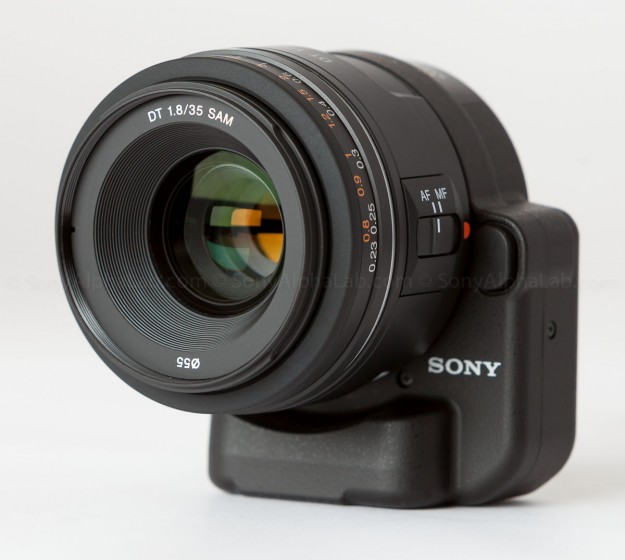HD Webcasting with the Sony NEX-FS100
Part 2 of this series on webcast video production focuses on Sony's NEX-FS100 large-sensor camcorder and new capabilities added via a firmware upgrade that (among other things) makes it compatible with Sony's LA-EA2 lens adapter. While it's not as strong a webcast camera as the FS700 (review coming soon), it still has much to recommend it.
Image Quality and Detail
When it comes to a low-noise video camera, once you work with a video camera with a sensor the caliber of the Sony Super35mm sensor, you will never want to work with anything lesser again. Beyond the low noise, the resolving power and preserved detail of the FS100 makes your images pop, and come as close to 3D as a 2D medium allows. Simply put, all other images will look flat in comparison.
Part of this is the ability of a large-sensor video camera to control the depth of field so that focus is on your subject, while the background and distracting details are defocused. But the significant upgrade to the image detail where you want it makes your video less video-like.
Audio Inputs
When webcasting, you don't typically use the audio inputs on the video camera as this is handled somewhere else along the workflow chain, but most video producers don't have the luxury to purchase single-purpose video cameras.
So the FS100 dual and independently controllable mic, with its 48v phantom power and line-level XLR inputs (Figure 2, below), its ability to isolate headphone audio monitoring to either audio input or a stereo left/right feed or both, and the beautiful and low-bitrate AVCHD codec are important considerations for everything else you film.

XLR input on the Sony FS100
Expanded Focus
With the recent upgrade of the FS100 firmware, Sony added even more value to the FS100 via increasing the expanded focus from 2x to 4x and 8x, which you can use to assist with manual focusing, even while recording. On a shallow depth of field camera that resolves so much more detail than a small sensor video camera, critical focusing is, well, critical.
Using the Sony LA-EA2 Adapter
One of the features I was waiting for in the latest firmware upgrade to this camera was the ability to use the Sony LA-EA2 adapter (Figure 3, below) with the FS100. The original LA-EA1 adapter allowed limited use of Sony's entire line of Alpha mount lenses, along with legacy Konica-Minolta and Minolta AF A-mount lenses. Electronic controls were limited to iris control through the body but not much else and, unfortunately, when you opened the iris the change was not smooth and the iris momentarily went full wide open before slamming into the precise f-stop that was requested, ruining your footage while making iris changes while recording.

Figure 3. The Sony LA-EA2 lens adapter, which can now (thanks to a firmware upgrade to the camera) be used with the FS100
The LA-EA2 solved the iris change problem but also added another exciting feature borrowed from the Alpha line of SLR cameras. The LA-EA2 adapter features what Sony erroneously calls a translucent mirror but is technically a pellicle mirror, and it is this semi-transparent beam-splitter that adds Phase Detection Autofocus to the FS100. With two images to compare, PDAF is different from the Contrast Detection AF that other video cameras and SLR cameras use in that it doesn't need to jog in and out of focus in order to find the focal setting that has the highest contrast. PDAF is lightning fast and accurate.
Related Articles
Almost Live with Streaming Media reports from NAB 2014 with the latest on the Sony NEX-FS700R and new developments in the E-Mount lens ecosystem.
In this ongoing Streaming Media Producer series on webcast video production, Shawn Lam covers the video format converters he uses in his own HD webcast workflows, and one new converter that just might be the video converter, scaler, and distribution amplifier to rule them all.
Now featuring a new interview from NAB 2013 on the Sound Devices Pix240i, this article looks at a handful of portable and rackmount external video recorders for live HD production, specifically in the role of recording the master program feed from a live switch.
Shawn Lam compares key models in Sony's large-sensor camcorder line--the new shouldermount NEX-EA50, and the comparatively venerable handheld FS100 and FS700--with an eye to light sensitivity, image quality, and effectiveness with power zoom lenses, and reports on his epic, ongoing search for a viable parfocal 3x+ servo zoom lens.
This article is the fourth in a series on webcast video production and discusses video switchers, including the cost and features that differentiate several popular models.
The Sony NEX-FS700 has much to recommend it as a top-flight large-sensor, interchangeable-lens camcorder and as a worth-the-upgrade successor to the Sony FS100. And it's 4k support and 10x slo-mo are nothing to sneeze at. But what makes it the best camera in the market for webcast producers?
This article will be the first in a series of articles on webcasting and will cover a wide range of topics including video cameras, video switchers, converters, computer inputs, audio, reference monitors, webcast hardware, webcast software, live streaming services providers, and some additional hardware that is important in order to produce a professional live webcast.